Filter by
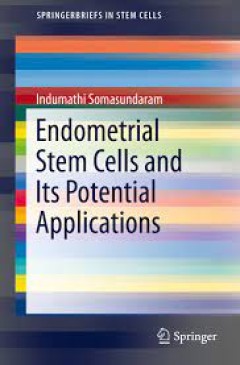
Endometrial Stem Cells and Its Potential Applications
Stem cells have ushered in widespread interest and exciting possibilities for cell based therapies. Despite multiple initiatives and meticulous untiring efforts, translating this bench side research into bedside practice and therapies remains a challenge. A better understanding of expanding research in specific areas of stem cells is crucial in developing regenerative medical therapeutics. With…
- Edition
- -
- ISBN/ISSN
- 978-81-322-2746-5
- Collation
- 18 b/w illustrations, 2 illustrations in colour
- Series Title
- -
- Call Number
- -
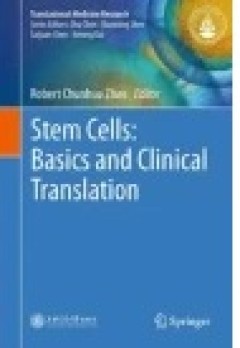
Stem Cells: Basics and Clinical Translation
It is my great honor to be invited by Professor Zhu Chen as the chief editor of the Stem Cell Fascicle of Published Engineering. Chinese scientists have been devoting to the basic research and clinical application in the field of stem cell biology and have obtained a series of original achievement in the flow of exploration of fundamental theory, key scientific problem research, clinical tri…
- Edition
- -
- ISBN/ISSN
- 978-94-017-7273-0
- Collation
- -
- Series Title
- -
- Call Number
- -
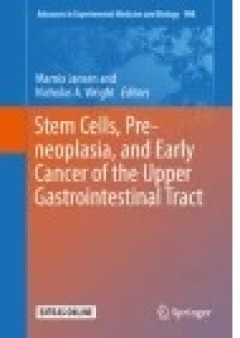
Stem Cells, Pre-neoplasia, and Early Cancer of the Upper Gastrointestinal Tract
It remains unclear when and where Charles Darwin had his transformative idea of species evolution through random variation and selective retention. The legend goes that the fi rst inklings of the idea came to him on board the Beagle during the ship’s visit to the Galapagos Islands in the Eastern Pacifi c. Here he beheld fi nches with differently shaped beaks, which suggested local adaptat…
- Edition
- -
- ISBN/ISSN
- 978-3-319-41388-4
- Collation
- -
- Series Title
- -
- Call Number
- -
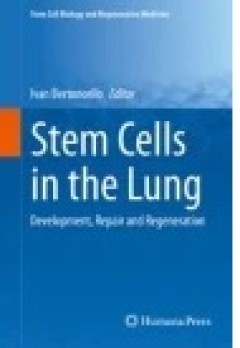
Stem Cells in the Lung
The last decade has witnessed significant progress in understanding the organization and regulation of regenerative cells in the adult lung. The development and refinement of multiparameter flow cytometric cell sorting protocols and in vitro clonogenic assays has enabled the identification, prospective isolation, and characterization of candidate adult lung stem and progenitor cells. Powerful…
- Edition
- -
- ISBN/ISSN
- 978-3-319-21082-7
- Collation
- -
- Series Title
- -
- Call Number
- -
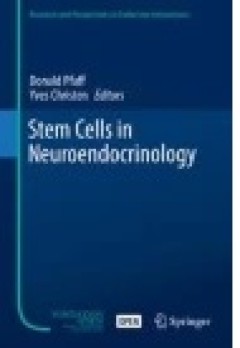
Stem Cells in Neuroendocrinology
Techniques for manipulating neural systems in general and neuroendocrine systems in particular have matured greatly compared to the era in which nerve cell destruction and electrical stimulation provided our main tools. In theory, nerve cell groups connected with hormonal systems should offer strategic advantages to the stem cell biologist because of the wealth of chemically understood regul…
- Edition
- -
- ISBN/ISSN
- 978-3-319-41603-8
- Collation
- -
- Series Title
- -
- Call Number
- -
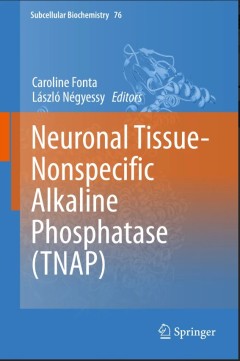
Neuronal Tissue-Nonspecific Alkaline Phosphatase (TNAP)
Phosphatases, such as TNAP are fundamental in regulating the roles of cellular, and consequently numerous body functions. TNAP is a ubiquitous enzyme with a wide spectrum of substrates and specificity. Regulation at the cellular level and the lack of TNAP activity is a lethal condition. Recent findings of a highly specific regional, laminar and subcellular localization of TNAP in the cerebral c…
- Edition
- 1
- ISBN/ISSN
- XXII, 395
- Collation
- XXII, 395
- Series Title
- Subcellular Biochemistry
- Call Number
- -
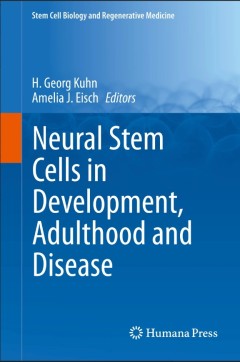
Neural Stem Cells in Development, Adulthood and Disease
This comprehensive volume is the first to specifically target developing, adult and diseased neural stem cells. It explores recent advances in the understanding of neural stem cell biology along with strategies that use these cells to tackle neurological diseases and brain aging. Ten inclusive chapters discuss a wide range of topics including neurogenesis, neurodegeneration, demyelinating disea…
- Edition
- 1
- ISBN/ISSN
- 978-1-4939-1907-9
- Collation
- XXI, 202
- Series Title
- Stem Cell Biology and Regenerative Medicine
- Call Number
- -

Myxozoan Evolution, Ecology and Development
This book provides an up-to-date review of the biology of myxozoans, which represent a divergent clade of endoparasitic cnidarians. Myxozoans are of fundamental interest in understanding how early diverging metazoans have adopted parasitic lifestyles, and are also of considerable economic and ecological concern as endoparasites of fish. Synthesizing recent research, the chapters explore issues …
- Edition
- 1
- ISBN/ISSN
- 978-3-319-14752-9
- Collation
- XIII, 441
- Series Title
- -
- Call Number
- -

Stem Cells and Cancer Stem Cells, Volume 13
Stem Cells are nature’s indispensable gift to multicellular organisms, including humans. In human history, immortality has been one of the most cherished, but unrealistic, wishes of human beings. Indeed, we are still hoping to cure serious diseases to achieve immortality, but medical treatments have been proven to result in less than impressive success. An excessive emphasis on medical t…
- Edition
- Volume 13
- ISBN/ISSN
- 978-94-017-7233-4
- Collation
- -
- Series Title
- -
- Call Number
- -
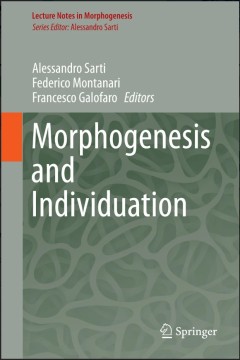
Morphogenesis and Individuation
This contributed volume aims to reconsider the concept of individuation, clarifying its articulation with respect to contemporary problems in perceptual, neural, developmental, semiotic and social morphogenesis. The authors approach the ontogenetical issue by taking into account the morphogenetic process, involving the concept of individuation proposed by Gilbert Simondon and Gilles Deleuze. Th…
- Edition
- 1
- ISBN/ISSN
- 2195-1934
- Collation
- -
- Series Title
- Lecture Notes in Morphogenesis
- Call Number
- -
 Computer Science, Information & General Works
Computer Science, Information & General Works  Philosophy & Psychology
Philosophy & Psychology  Religion
Religion  Social Sciences
Social Sciences  Language
Language  Pure Science
Pure Science  Applied Sciences
Applied Sciences  Art & Recreation
Art & Recreation  Literature
Literature  History & Geography
History & Geography